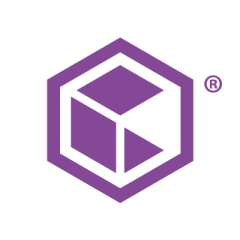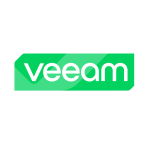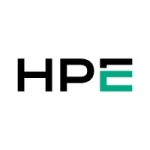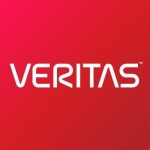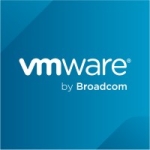What is our primary use case?
It is used as an enterprise backup solution.
How has it helped my organization?
We have a very good disaster recovery solution with Commvault. We have a standby CommServe where logs are being deployed every five minutes. If something goes wrong, we are immediately able to recover and enable services on the standby server. We are achieving 99.9 percent SLA with respect to the backups.
It also helps to ensure broad coverage through the discovery of unprotected workloads. We can easily identify them in the Web Console where we can see which of our servers is not protected. And if there is no backup for more than one day, we can get a report, and we have also enabled alerts. Those features are really helpful to us in identifying and addressing issues.
Commvault minimizes the time we spend on backup tasks. I only have to check the health of the CommCells, and the rest of the time I can work on the other tasks.
What is most valuable?
It's a very good enterprise backup solution with multiple features. We are able to take a backup of multiple databases. We don't need to use scripts to schedule any kind of local backups. We have a direct plugin for Commvault so that we are able to take backups of any of our databases or application systems, like SharePoint. Commvault is also enabling backup for PaaS services that are deployed on the cloud.
Commvault provides encryption mechanisms with the latest standards that our customers are looking for.
The CommCell console is very good and user-friendly. I have experience with NetBackup, HPE DP, and Backup Exec, but I'm really comfortable with Commvault. The console makes it easy to identify exactly what we need to see. For example, there are multiple categories. If a backup needs to be performed on multiple systems, we just configure one client or one group and we can push the agent straightaway. That's a very good feature that helps us to complete tasks on time.
We can integrate our multiple CommCells in the single Web Console as well and that helps us easily identify how many servers are getting backed up and how many servers are not being backed up. We can see the SLA and the success rate. And even though our customer is huge, we can give them access and they can easily see the SLA and the success rate of the backups. Commvault also recently launched the Command Center. It is very good, enabling us to deploy server plans. It is very good and user-friendly.
For disaster recovery, there is a feature called Live Sync, and we are also able to export disaster recovery backups to the cloud. If something goes wrong, we are immediately able to recover and continue with business.
In addition, if something goes wrong and a backup fails, we can trace the issue using the log. Each service has a different log that clearly gives us information about the exact reason for the issue and what needs to be done.
We have multiple workloads, including SQL, Oracle, SAP HANA, especially Sybase, as well as file systems, VMs, and Exchange mailboxes. Commvault provides very good support for them. We perform 70 to 80 restores on a monthly basis. Over the past year, I have faced challenges with one or two restores. All the rest were completed successfully. And if we get stuck, we can easily use the logs to identify the issue and to make some changes to the configuration. So we are approaching a 100 percent success rate with respect to restoration.
Commvault has very good procedures for performing backups and restores of SAP HANA databases. As far as I know, no other technology provides an option to perform a restore directly from the backup tool itself. We log in to HANA Studio when we have to perform a restore and Commvault enables this by default. We are able to do the restoration from the Commvault GUI itself.
Commvault also provides workflows. If you want to decommission a client's systems, there is a workflow where we just have to add the client to it and we can easily complete the task. This is useful when we are informed that a customer is moving out. It would be a huge task for the backup team to retain the backups for such-and-such a period of time and to release the license. Running this workflow makes our work very simple and reduces our efforts as well. The multiple workflows really help us in completing tasks quickly.
Overall it has great features that fulfill our customers' expectations.
For how long have I used the solution?
I have been using Commvault for the past seven years.
What do I think about the stability of the solution?
The stability is very good. If you don't follow the metrics and best practices recommended by Commvault, or if you mess up the setup, you may face challenges. If you follow the best practices, it's a very good, stable solution.
What do I think about the scalability of the solution?
We can easily expand our licenses and deploy Commvault for our customers, which keeps our business going. From a scalability point of view, I haven't seen many challenges.
How are customer service and support?
We get very good support from Commvault if we run into any kind of production issue. They maintain a very good SLA for critical and high-priority tickets. We are really satisfied with their support.
For example, let's say that something in production is down or multiple customers are impacted. SAP won't join a call and help us in resolving the issue. But if we have a critical CommServe-level issue, and multiple backups may fail, Commvault can easily jump on a call and can help us in addressing this issue. In reality, if something is wrong with a SAP system or if an OS is not functioning, a customer may not be able to do their work. Whereas, without a backup, they can continue their business, but they cannot recover things if something goes wrong. Still, if we raise a high-severity ticket, based on the criticality, Commvault support will definitely jump in. They can help us in one hour, at the most.
How would you rate customer service and support?
How was the initial setup?
In one of my older projects, deployment of Commvault was simple, but the current one is complex. It's a very big environment. It depends on the environment of the client and the requirements. If you have a shared mechanism and the customer has multiple firewalls at their end, it will be very difficult to integrate multiple customers into one CommCell. But if you have a single project and a dedicated customer in a single domain, it will be very easy.
What's my experience with pricing, setup cost, and licensing?
Compared with other backup technologies, Commvault is a bit more costly, but we are satisfied with the support, the services, and the features that we get with Commvault.
We are using the capacity-based license and have a total of 10 CommCells. In the license file, we can clearly see what kinds of workloads can be backed up.
Which other solutions did I evaluate?
Veeam is very useful for Windows-related platforms but we chose Commvault because it does not have any kind of platform dependency when it comes to backups. It has multiple features enabling us to backup Oracle RAC, or Exchange DAG, and IBM Lotus Notes, and any type of PaaS services.
Commvault has a clear-cut, three-tier architecture, whereas others follow a two-tier architecture, other than NetBackup, I believe. With Commvault, every backup load will be taken care of by the MediaAgent, and administrative tasks will be taken care of by the CS. Evn the CommServe size also not be huge when compared with other solutions.
What other advice do I have?
With respect to security, in particular regarding ransomware, Commvault has built-in features that we enabled to protect our environment. As for storage targets, every storage array has its own built-in mechanism for encrypting or securing the data. It is very difficult for a third party to enter and to make any kind of use of the storage arrays.
Storage cost completely depends on the retention the customer is looking for. If they have, say, a 1 TB system and they're looking for more than two months' retention, there will be a lot of storage utilization. But we do get a very good duplication ratio, close to 90 percent for file system backups, which helps us to minimize the cost.
Overall, if your infra is very good, once you configure Commvault there are no challenges. It will function well. If something is wrong with the network, obviously, any backup technology will end up with issues. But Commvault is very good.
Which deployment model are you using for this solution?
On-premises
Disclosure: My company has a business relationship with this vendor other than being a customer. Premium Partner

